
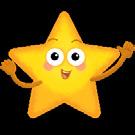
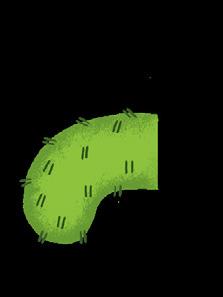

















HANDWRITING FOR NEW SOUTH WALES SAMANTHA DONNAN OXFORD THIRD EDITION AVAILABLE FOR KINDERGARTEN & YEARS 1–6 HANDWRITING FOR NEW SOUTH WALES OXFORD THIRD EDITION HANDWRITING FOR NEW SOUTH WALES THIRD EDITION OXFORD HANDWRITING FOR NEW SOUTH WALES SAMANTHA DONNAN OXFORD THIRD EDITION OXFORD HANDWRITING FOR NEW SOUTH WALES THIRD EDITION HANDWRITING FOR NEW SOUTH WALES OXFORD THIRD EDITION HANDWRITING FOR NEW SOUTH WALES OXFORD SONIA JOHNSON THIRD EDITION HANDWRITING FOR NEW SOUTH WALES OXFORD THIRD EDITION EVALUATION PACK Oxford Handwriting for New South Wales K–6 Third Edition
A brand-new handwriting series for K–6 that delivers a phonics-aligned approach, so that students learn to write letters in the same order that they are learning to read them
Written for the NESA syllabus, Oxford Handwriting for New South Wales is a brand-new comprehensive program for K–6 that supports a phonics-aligned approach, so that students learn to write letters in the same order that they are learning to read them. The order of letters in the year K book is aligned with the Letters and Sounds phonics sequence. For Years 1 and 2, the letters are grouped by shape, using words and phrases that are fully decodable. For Years 3 to 6, each book has an informative and engaging theme, and helps students learn cursive joins to improve speed and legibility.
This series is designed to introduce and develop the fundamental skills of handwriting and allow students to master a fluent, automatic style. This complete handwriting series features information and reminders for correct posture, pencil grip and paper position, as well as plenty of practice to learn accurate letter formation and keyboarding techniques. The Oxford Handwriting interactives on Oxford Owl allows teachers to explicitly model how to form letters from print to cursive joins.

Student Workbooks
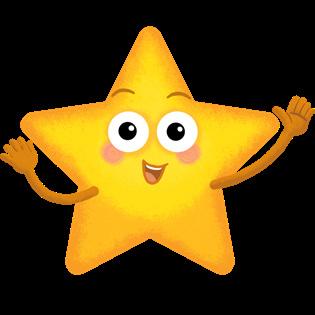
Oxford Handwriting for New South Wales workbooks develop the building blocks of handwriting through explicit instruction. Featuring letters presented in sequenced phonics order aligned with Letters and Sounds, Year K reinforces the sound-to-letter connection. The workbooks for Years 1 and 2 include fully decodable words and phrases. Each year level from K through to Year 6 includes activities for students to practise accurate letter and number formation in New South Wales Foundation Style handwriting, as students move from print to cursive writing.
Teaching support and resources
For adopting schools, Oxford Handwriting for New South Wales gives you access to a dashboard to support front-of-class explicit instruction, including an interactive digital tool to demonstrate letter formation, speed loops and fluency joins. Digital student books, worksheets, scope and sequence charts, lesson planning for teaching both handwriting and keyboarding, and assessment and recording templates.
The scope and sequence and lesson plans provide a structured roadmap for you, allowing you to seamlessly integrate the content into your teaching plans.
2
What does Oxford Handwriting look like for Years K–2?
Model
For adopting schools, use the online Handwriting interactive to model the correct technique. Modelling includes how to print lower-case and capital letters, numbers and words from the Oxford Wordlist.
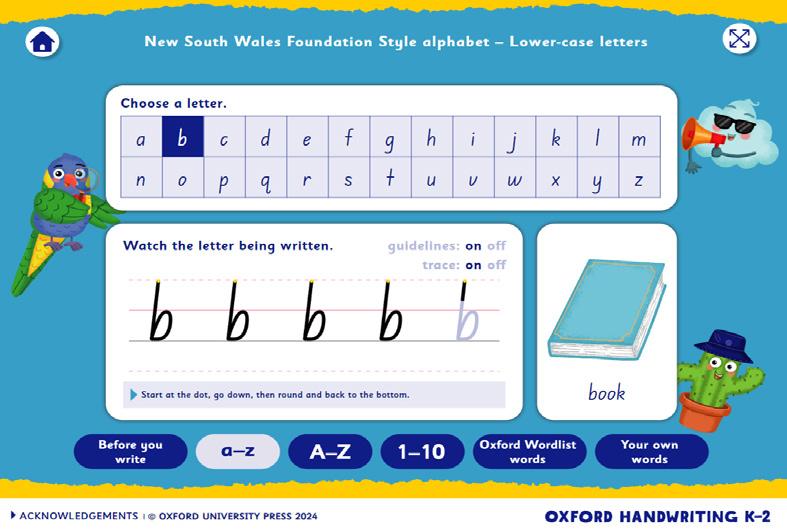
Practise
Students work independently in their workbooks, practising the letter formation.
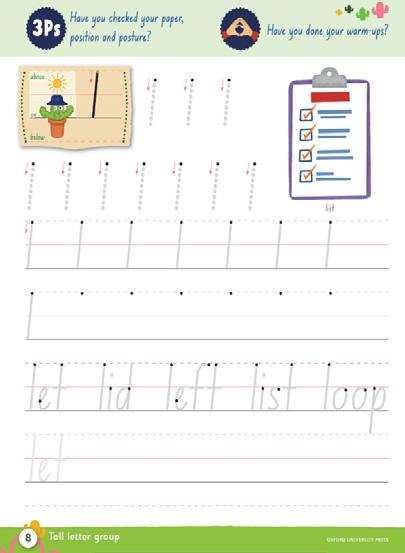
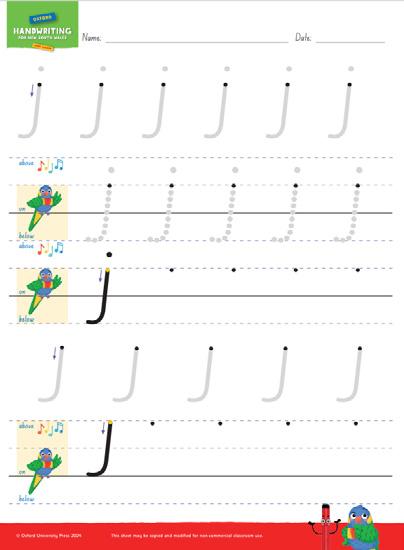
What does Oxford Handwriting look like for Years 3–6?
Model
For adopting schools, use the online Handwriting interactive on Oxford Owl to model the correct technique. Modelling includes how to form cursive writing with speed loops and fluency joins. The demonstration words come from the Oxford Children’s Language Australia Corpus.
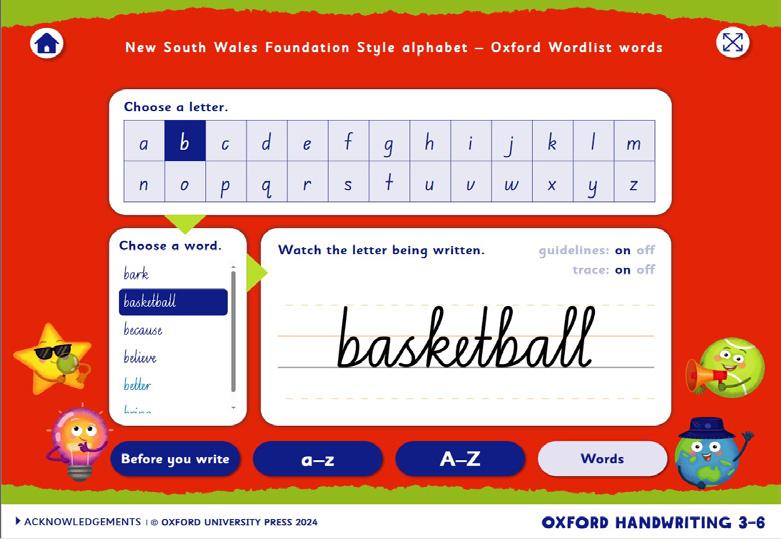
Practise
Students work independently in their workbooks, practising their handwriting.
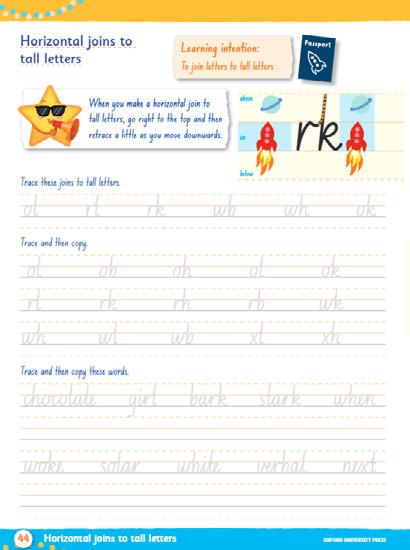
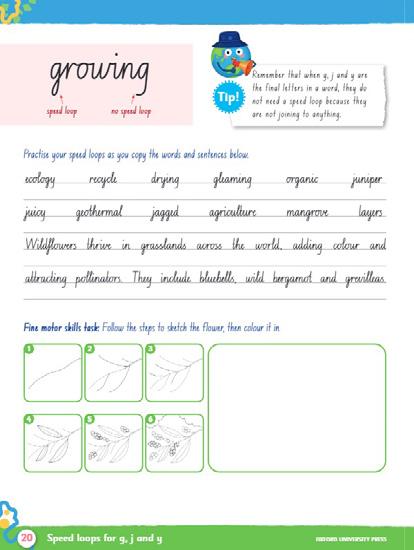
Consolidate
Download the activity sheets from Oxford Owl for students to do further practice. Consolidate
After each section has introduced a new skill for cursive handwriting, there is a Consolidating page, followed by an Assessment page.
3
1 1
2 2 3 3
Oxford Handwriting for New South Wales, Third Edition, Year 3 Oxford Handwriting for New South Wales, Third Edition, Year 1 Oxford Handwriting for New South Wales, Third Edition, Year 6 Oxford Handwriting for New South Wales, Third Edition, Year K
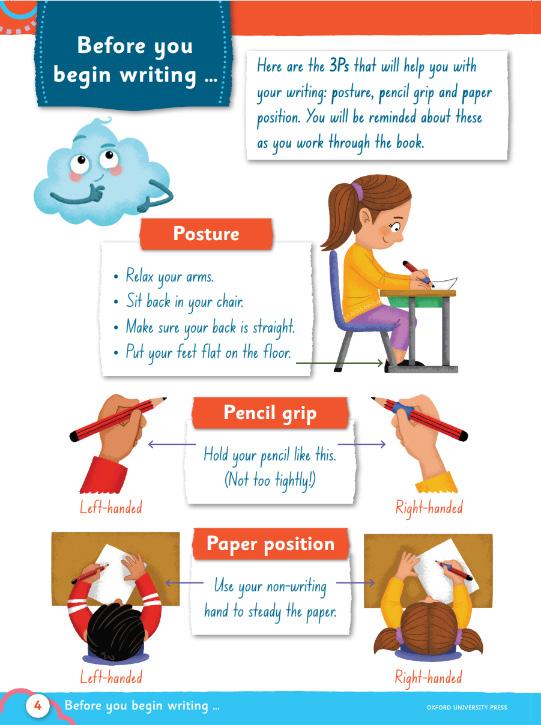
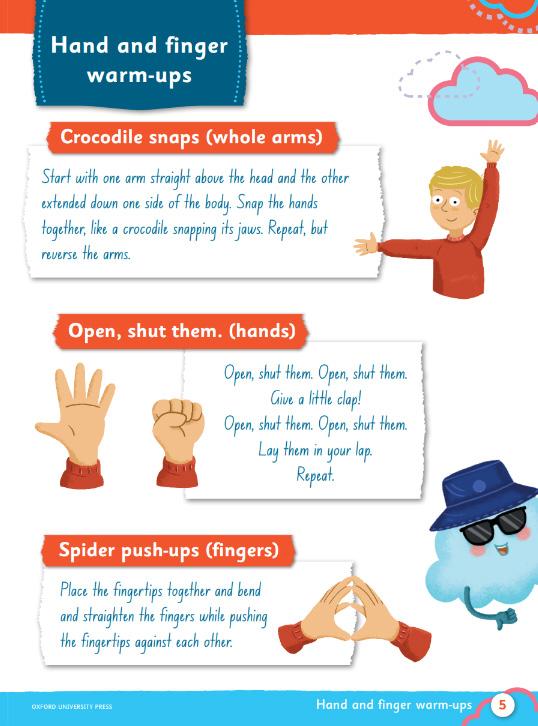
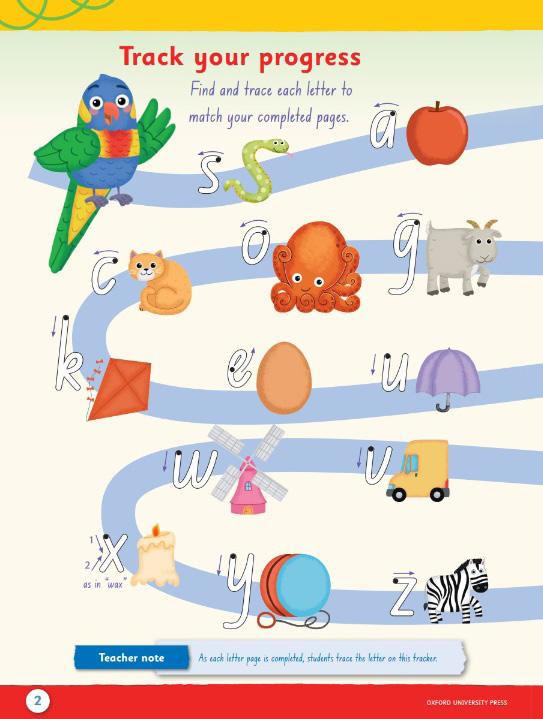
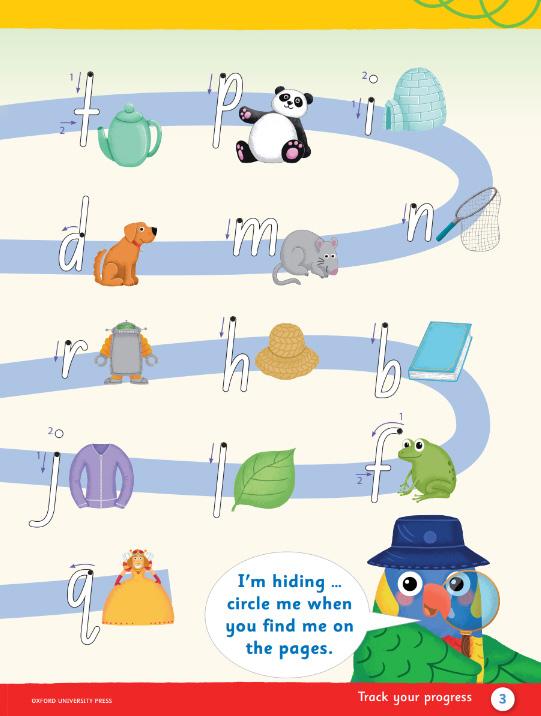
4 Oxford Handwriting for New South Wales, Third Edition, Year 2 Oxford Handwriting for New South Wales, Third Edition, Year K Track your progress Before you write


Example page spreads How to use
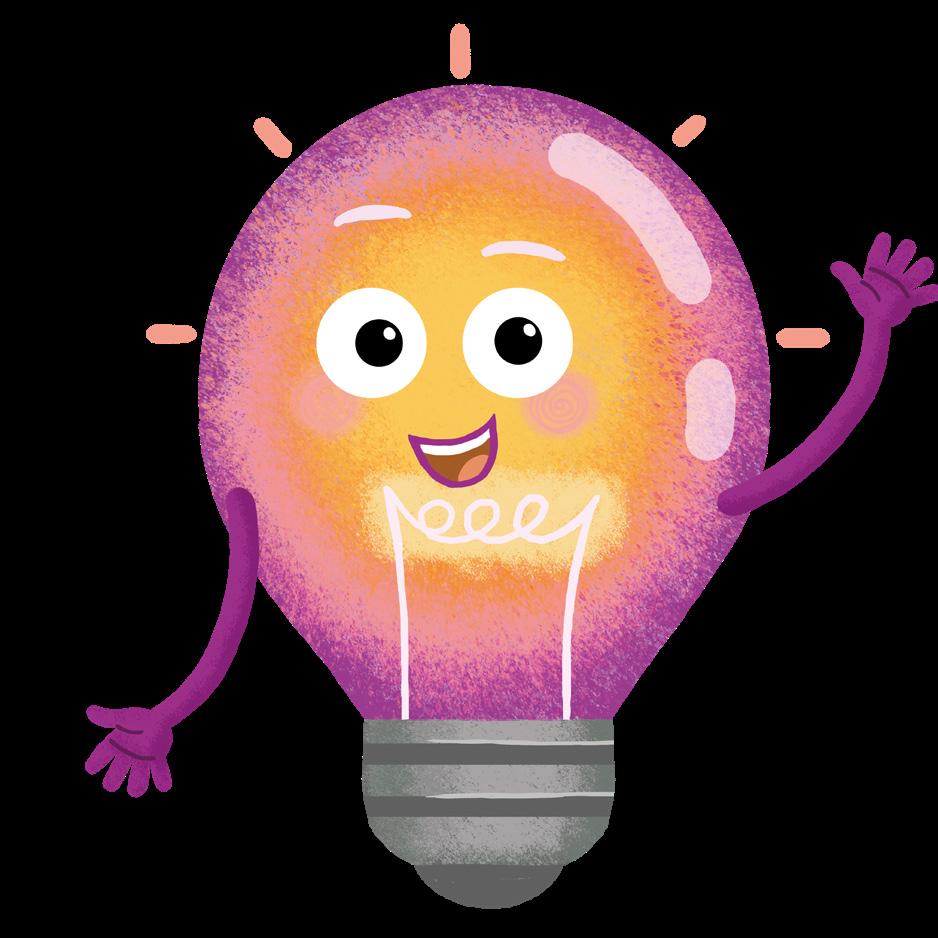

5
How to use – Year K
On each double page spread for Year K, Marlee the rainbow lorikeet is hiding. This can be used to help focus students’ attention on the page. To ensure each student is on the correct page and ready for learning, ask: “Who can find where the bird who is hiding? Raise your hand when you’ve found it.”
Featured on all K–2 workbooks: Model of lower- and upper-case letters with starting dot and directional arrows showing where to start the letter and how to form them.
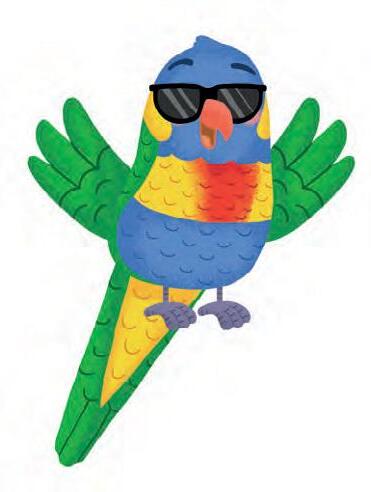
Patterns for students to practise strokes similar to the letters they are forming to develop fluency and automaticity.
Track
TRACK: Students track the letter with their finger, saying its name or sound.
TRACE: Students use a pencil to trace the letter, saying its name or sound.
COPY: Students write the letter from a model located at the start of the line.
Trace
Featured on all K–2 workbooks: On each double-page spread, students are asked to select a letter and a word that they have formed correctly, which encourages students to look closely at their work. Self-assessment is a valuable tool for students to reflect on their learning.

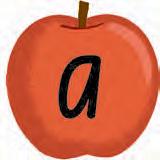
Ask students to circle their best lower-case a and upper-case A. Ask them to explain the reason for their choices to you or a classmate.
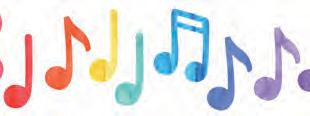
6 Self-assessment! 10 OXFORD UNIVERSITY PRESS
Copy
a a a aaaaa aaaaa a a a
Featured on all K–2 workbooks: Lower-case and upper-case models, with an image to remember the sound of the letter
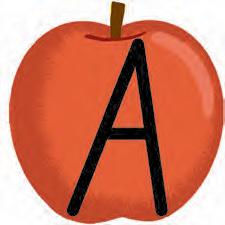

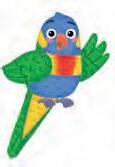




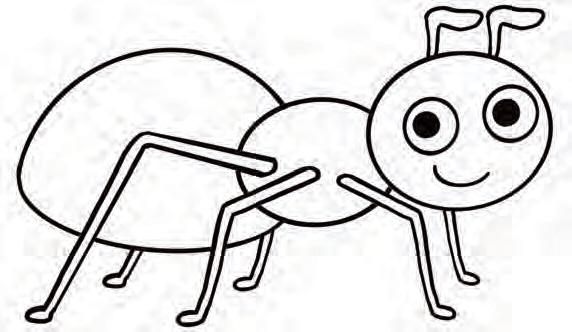
over the letter a, and then colour in the picture of the ant.
Featured on all K–2 workbooks: Directional arrows show where to start the letters and how to form them.
The numbers on the letters indicate each time the pencil is lifted to start a new stroke.
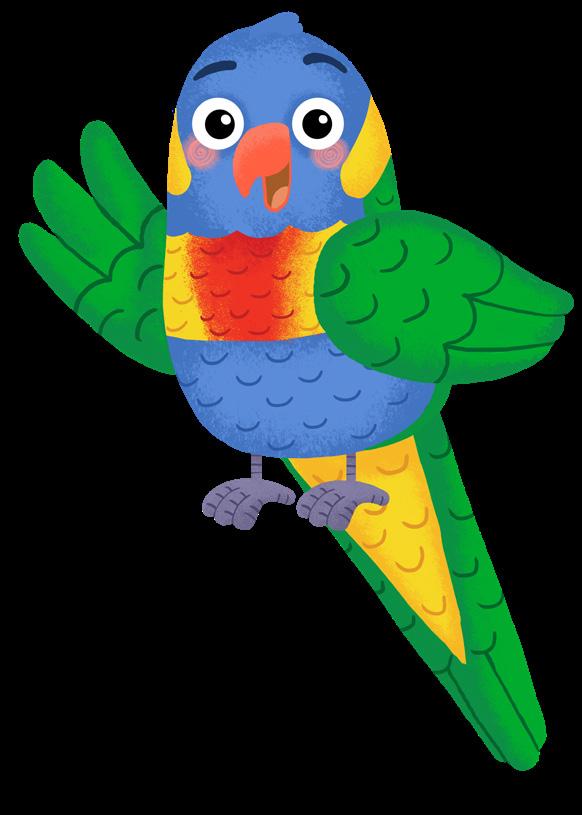
can practise letter formation independently, and have opportunities for creative expression. For adopting schools, go to Oxford Owl to access the teacher dashboard. This includes an interactive tool to demonstrate letter formation, as well as digital student books, worksheets, scope and sequence charts, lesson plans, and assessment and recording templates.
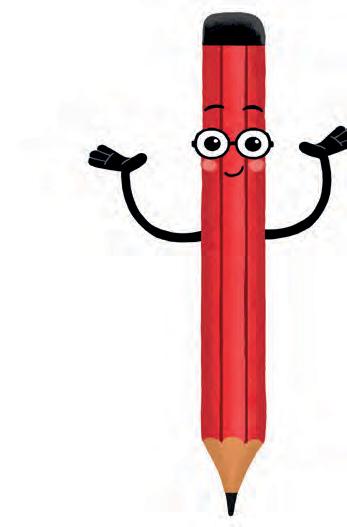
7 Fast finishers 11 OXFORD UNIVERSITY PRESS aA above on below above on below above on below A a
A A A a 21 3 21 3 21 3 21 3
Trace
How to use – Year 1
Featured on all K–2 workbooks: Model of lower- and upper-case letters with starting dot and directional arrows showing where to start the letters and how to form them.
TRACK: Students track the letter with their finger, saying its name or sound.
TRACE: Students use a pencil to trace the letter, saying its name or sound.
COPY: Students write the letter from a model located at the start of the line.
Featured on all K–2 workbooks: The baseline is a reference point for maintaining consistency in letter placement and formation.
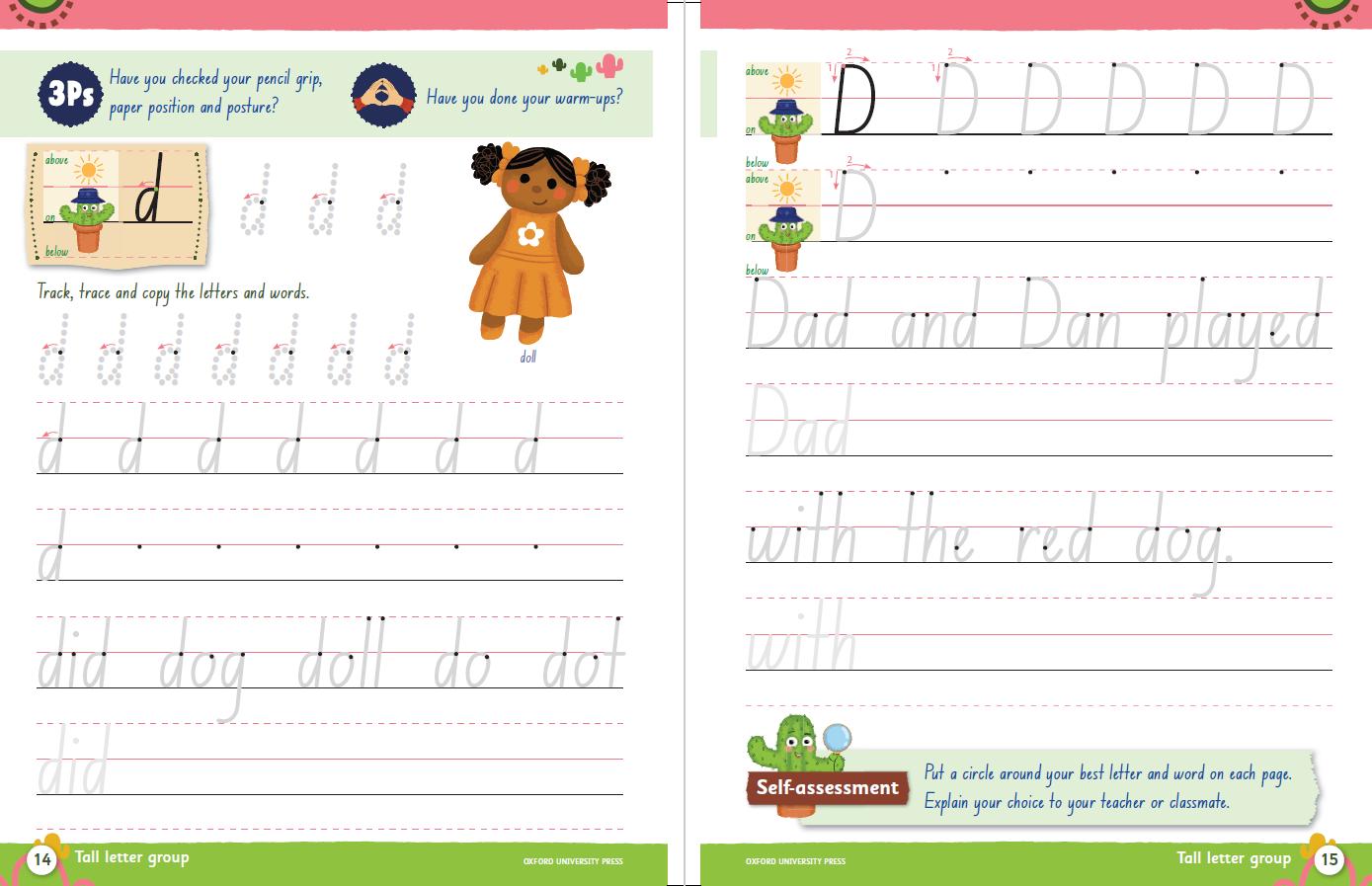
8
Featured on all K–2 workbooks: Above, on, below feature as a visual guide to letter placement and sizing.

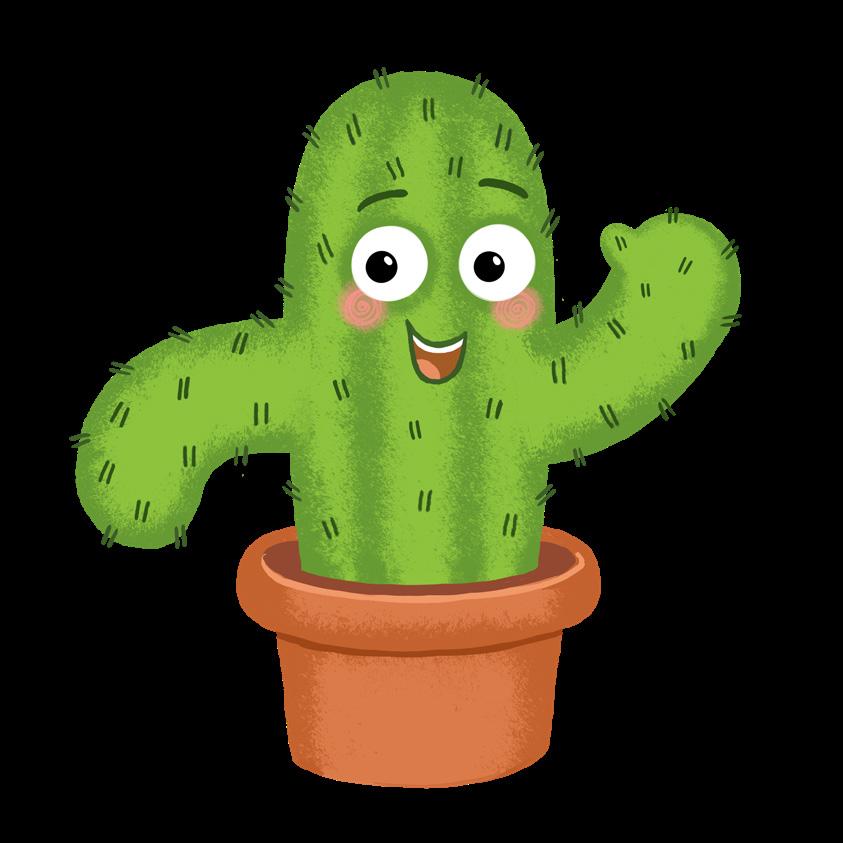
Fully decodable sentences for students to copy
First word modelled in lighter grey for guidance
Featured on all K–2 workbooks: On each double-page spread, students are asked to select a letter and a word that they have formed correctly, which encourages students to look closely at their work. Self-assessment is a valuable tool for students to reflect on their learning.
For adopting schools, go to Oxford Owl to access the teacher dashboard. This includes an interactive tool to demonstrate letter formation, as well as digital student books, worksheets, scope and sequence charts, lesson plans, and assessment and recording templates.
9
How to use – Year 2
Each page has two important reminders: 1. To check the 3Ps: posture, pencil grip and paper position 2. To warm up your fingers for writing
Featured on all K–2 workbooks: Model of lower- and upper-case letters with starting dot and directional arrows showing where to start the letters and how to form them.
TRACE: Students use a pencil to trace the letter, saying its name or sound.
COPY: Students write the letter from a model located at the start of the line.
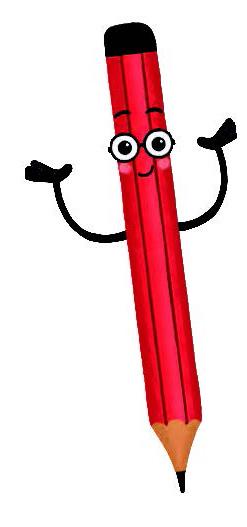
Letters are grouped by where the letter sits on the line.

Featured on all K–2 workbooks: An image to remember the sound of the letter.



Trace and then copy the letters and words.
Have you checked your posture, pencil grip and paper position?
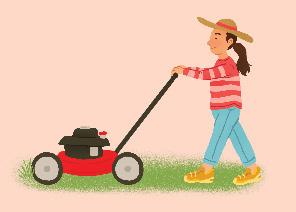
Have you done your warm-ups? mowing


10
above below on made make making may monkey march magic magical magically m n x z i a c e o s u m mmmmmmmmm m m m m
44 OXFORD UNIVERSITY PRESS
m m
Short letter group
Featured on all K–2 workbooks: Above, on, below feature as a visual guide to letter placement and sizing.

Max and Malia played amazing music at the school concert. M M MMMMMMM

Fully decodable sentences for students to copy
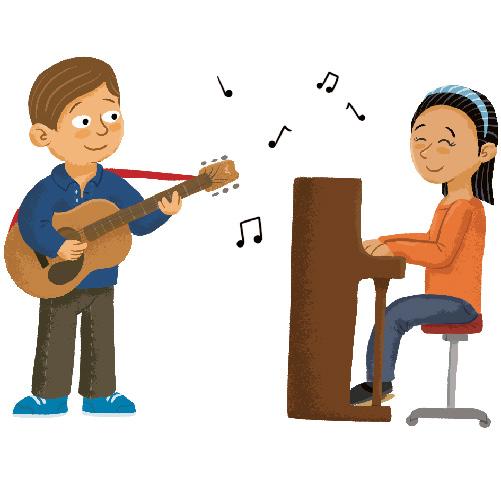
Opportunity for students to choose their own words from the page to practise
Choose some interesting words from the previous page and write them on the lines below.





Self-assessment Put a circle around your best letter and word on each page. Explain your choice to your teacher or classmate.

















Featured on all K–2 workbooks: On each double-page spread, students are asked to select a letter and a word that they have formed correctly, which encourages students to look closely at their work. Self-assessment is a valuable tool for students to reflect on their learning.
For adopting schools, go to Oxford Owl to access the teacher dashboard. This includes an interactive tool to demonstrate letter formation, as well as digital student books, worksheets, scope and sequence charts, lesson plans, and assessment and recording templates.
11 above below on
M m 1 1 1 1 2 2 2 2 45 OXFORD UNIVERSITY PRESS Short
group
letter
How to use – Year 3
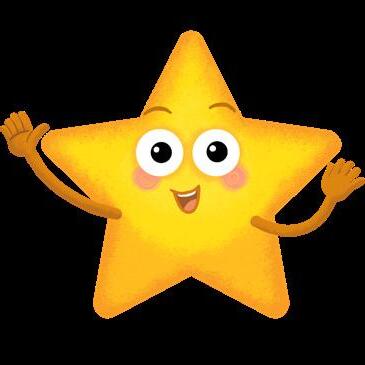
Opportunity for students to practise strokes by tracing over the model, followed by students writing (copying) the letters

Featured on all 3–6 workbooks: Students are encouraged to choose their most accurately formed letters and words, fostering careful review of their work. Selfassessment helps with reflecting on learning and planning future steps.

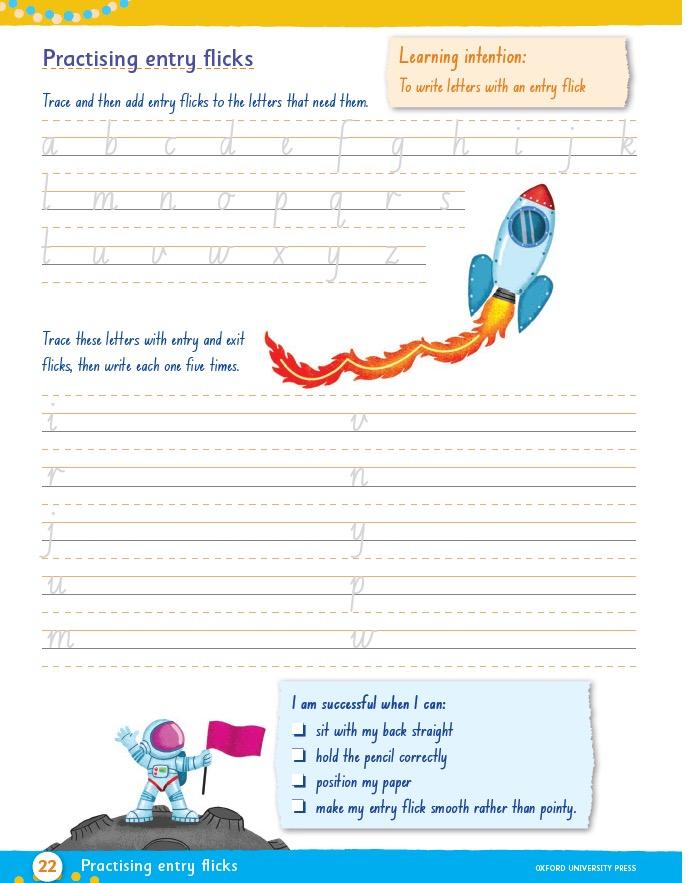
12
The Year 3 theme explores space, and each page uses space-related vocabulary for students to practise writing, offering a diverse and enriching learning experience.

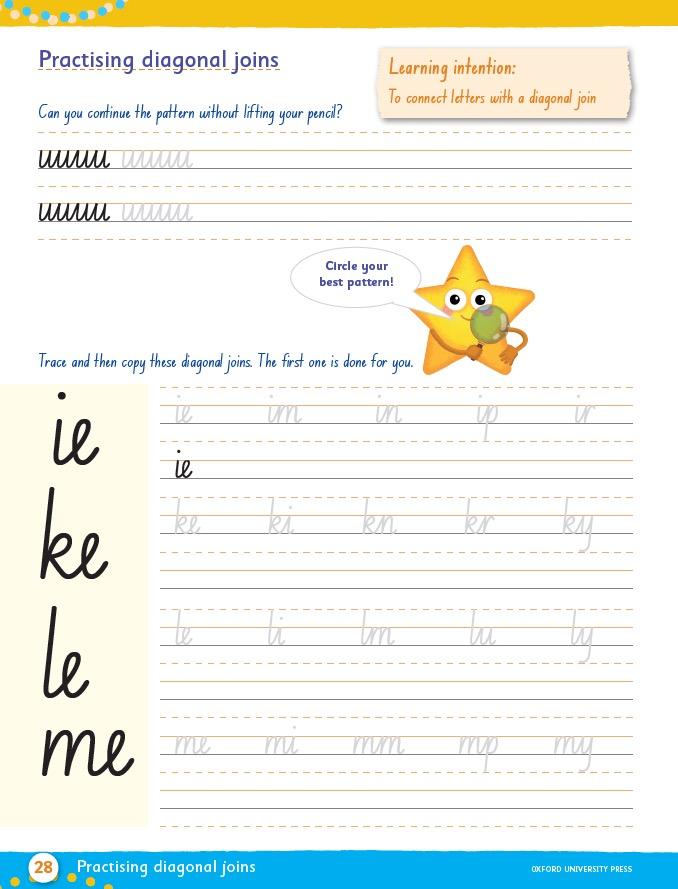
Patterns for students to practise strokes similar to the diagonal joins they are forming to develop fluency and automaticity
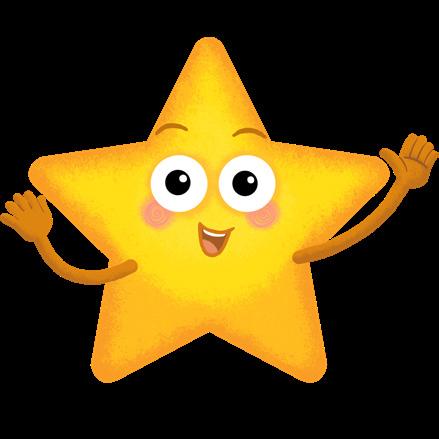
For adopting schools, go to Oxford Owl to access the teacher dashboard. This includes an interactive tool to demonstrate letter formation, as well as digital student books, worksheets, scope and sequence charts, lesson plans, and assessment and recording templates.
13
How to use – Year 4
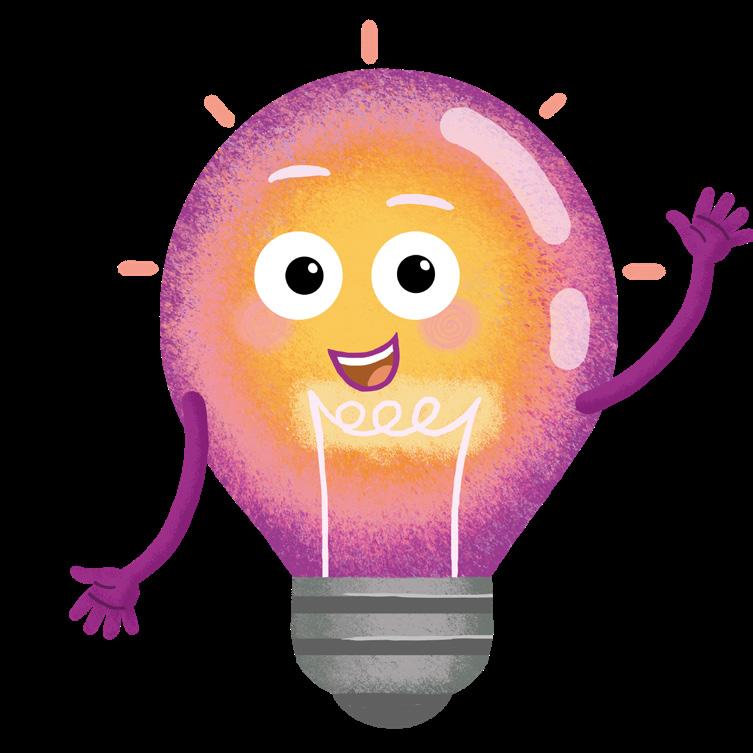
Featured on all 3–6 workbooks:
Learning intentions help students understand what the focus of the lesson is, and enable them to assess if they are successful.
Featured on all 3–6 workbooks: Students are encouraged to choose their most accurately formed letters and words, fostering careful review of their work. Selfassessment helps with reflecting on learning and planning future steps.
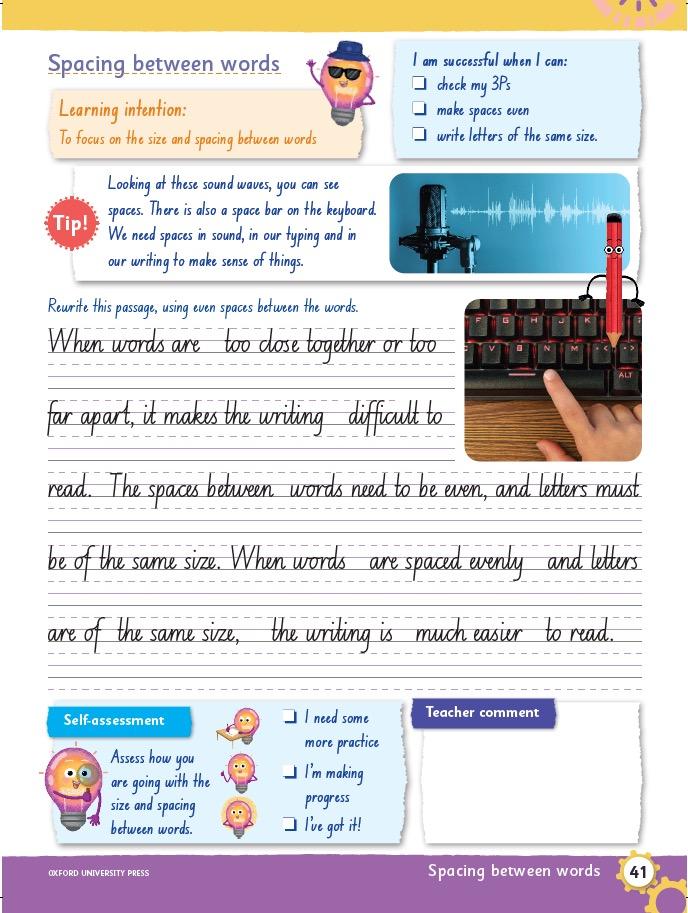
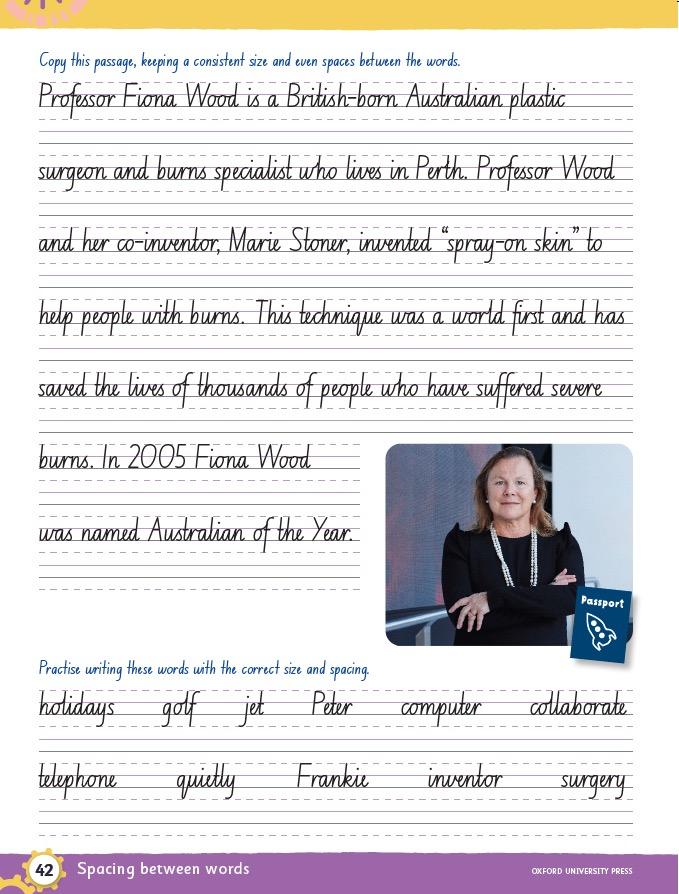
14
The Year 4 theme is innovators and inventions. Each double-page spread uses vocabulary for students to practise writing and improve speed and automaticity. The text includes information from cross-curricular subjects offering diverse and enriching learning experiences.



COPY: Students practise their cursive handwriting.

For adopting schools, go to Oxford Owl to access the teacher dashboard. This includes an interactive tool to demonstrate letter formation, as well as digital student books, worksheets, scope and sequence charts, lesson plans, and assessment and recording templates.
15
How to use – Year 5
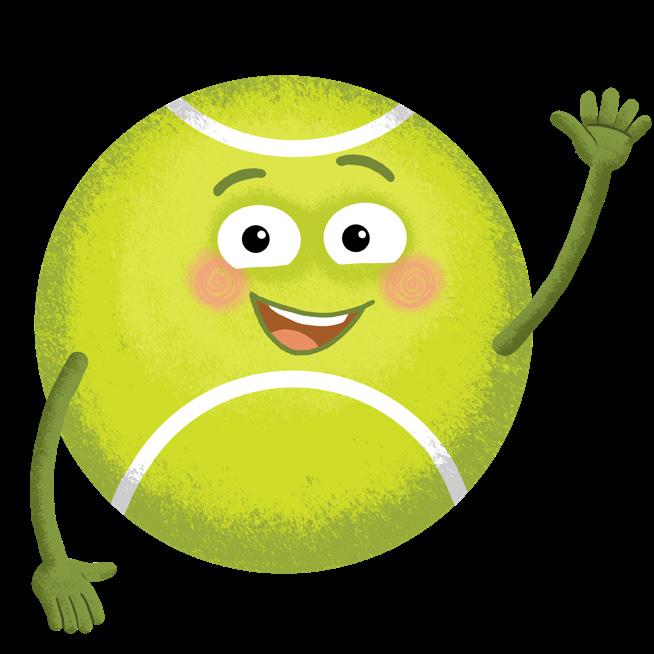
Horizontal joins
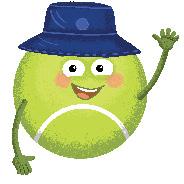
Practise these horizontal joins.

Learning intention: To use horizontal joins for o, r, v, w and x
Horizontal joins are made from letters that finish near the top.
outings boost workout development explore exciting crucial
Build three or more words from the base words, choosing the right suffixes from below. The first one is done for you. -ment , -ed , -ing, -able , -y, -ive, -ion Word building!
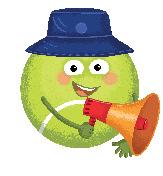
Don’t forget: we usually drop the e at the end of words when adding a suffix.
excite excitement excited exciting discover participate engage interact cooperate coordinate enjoy
Horizontal joins
16
small
dip retrace
oi om on op or ot ou ov ow ox rb ri rm rn ru rv rw va vi vo wi wa wn wo xi xp
OXFORD UNIVERSITY PRESS
retrace 12
Characters for each year level help with reminders, notes and advice along the way.
Year 5 theme is sport and health, which includes cross-curricular information and offers diverse and enriching learning experiences.
Assessment: Fluency and legibility
Copy the text below, focusing on your size, spacing and slope.
Fine motor skills task: Select two of your favourite pictures and sketch them in the box below.
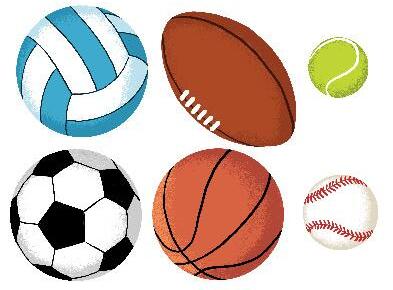
Sotball is a team sport that involves two opposing teams hitting a pitched ball and running around a series o bases to reach home plate . A run is scored when a baserunner safly touches all three bases and reaches home plate Each team has nine players , each o whom gets a turn to bat and to ield . Sotball is a sport played by all ages and skill levels throughout Australia Sotball is similar to baseball, but the field is smaller, the ball is bigger and only underhand pitches are allowed

Practise your keyboarding skills by typing this passage.
Featured on all 3–6 workbooks: The baseline is a reference point for maintaining consistency in letter placement and formation. Keyboard symbols act as a reminder to practise keyboarding, which is as essential as learning to handwrite fluently.
Featured on all 3–6 workbooks: Opportunities to draw or colour in encourage creativity and fine motor skills to help with handwriting.
17
Teacher feedback
48 OXFORD UNIVERSITY PRESS Assessment: Fluency and legibility
For adopting schools, go to Oxford Owl to access the teacher dashboard. This includes an interactive tool to demonstrate letter formation, as well as digital student books, worksheets, scope and sequence charts, lesson plans, and assessment and recording templates.
How to use – Year 6
Featured on all 3–6 workbooks:
Characters give tips on how to form letters to move from print to cursive.
Content supports cross-curricular content, such as grammar, science, health and geography. Here a word-building task helps with vocabulary building and morphological knowledge.
Featured on all 3–6 workbooks:
Opportunities to draw or colour in encourage creativity and fine motor skills to help with handwriting.

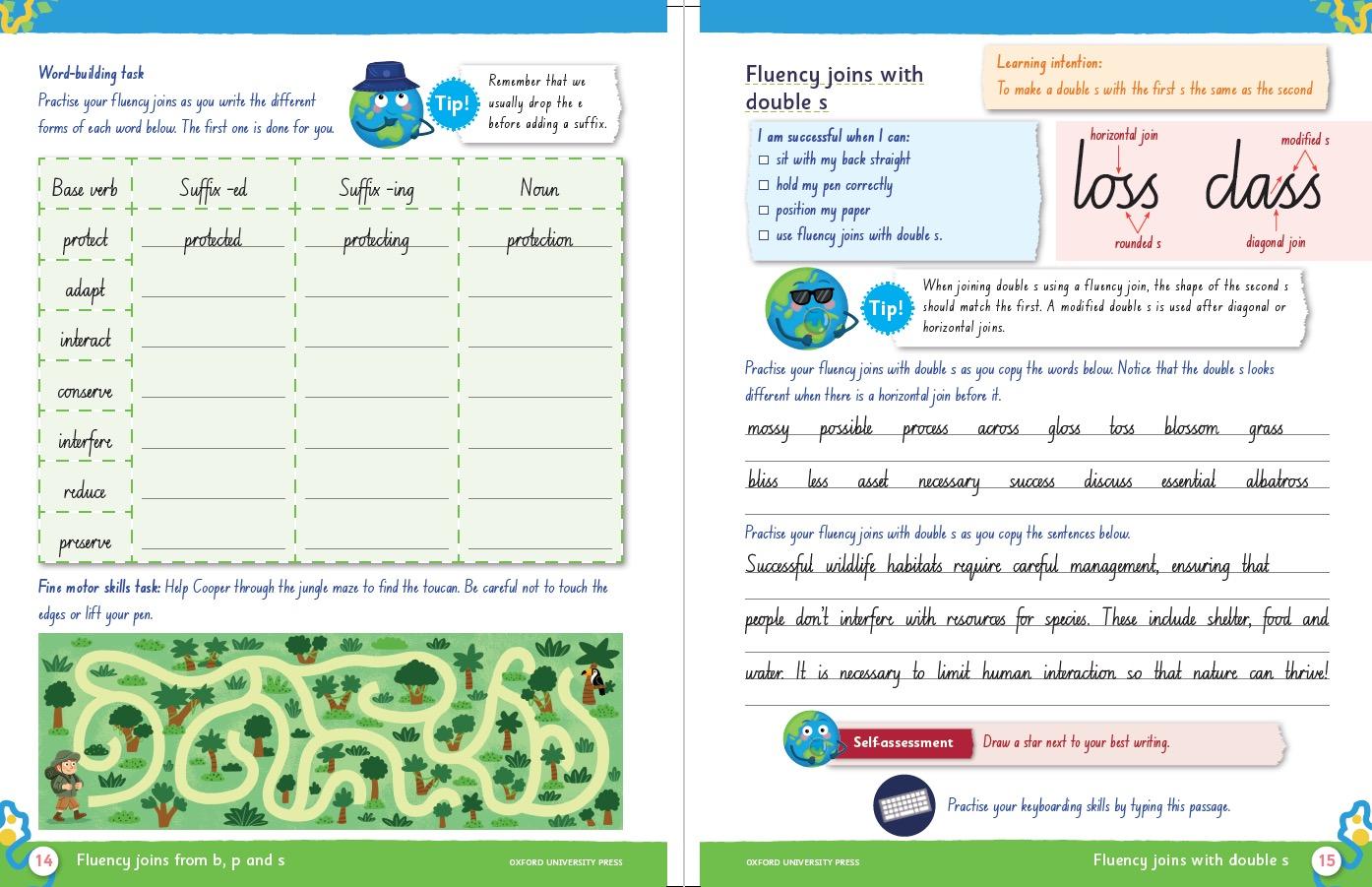
18
The year 6 theme is the environment, and each page uses relevant vocabulary to practise writing to build speed and automaticity. The material includes cross-curricular information from subjects like poetry, geography, and study skills like note taking.

Featured on all 3–6 workbooks: Models of different letters and joins are matched to the updated NESA syllabus.
Featured on all 3–6 workbooks: The baseline is a reference point for maintaining consistency in letter placment and formation.
Keyboard symbols act as a reminder to practise keyboarding, which is as essential as learning to handwrite fluently.
For adopting schools, go to Oxford Owl to access the teacher dashboard. This includes an interactive tool to demonstrate letter formation, as well as digital student books, worksheets, scope and sequence charts, lesson plans, and assessment and recording templates.
19


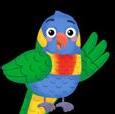







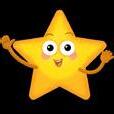













































OXFORD HANDWRITING FOR NEW SOUTH WALES 3E HANDWRITING FOR NEW SOUTH WALES SAMANTHA DONNAN OXFORD THIRD EDITION HANDWRITING FOR NEW SOUTH WALES SAMANTHA DONNAN THIRD EDITION OXFORD HANDWRITING FOR NEW SOUTH WALES SAMANTHA DONNAN OXFORD THIRD EDITION OXFORD HANDWRITING FOR NEW SOUTH WALES FRANCESCA ABOUMELHEM THIRD EDITION HANDWRITING FOR NEW SOUTH WALES OXFORD FRANCESCA ABOUMELHEM THIRD EDITION HANDWRITING FOR NEW SOUTH WALES OXFORD SONIA JOHNSON THIRD EDITION HANDWRITING FOR NEW SOUTH WALES OXFORD SONIA JOHNSON THIRD EDITION WEB oup.com.au/handwriting EMAIL cs.au@oup.com PHONE 1300 650 616 Contact your local Oxford Education Consultant oup.com.au/contact 9780190343439 9780190343460 9780190343491 9780190343446 9780190343477 9780190343453 9780190343484


































































































